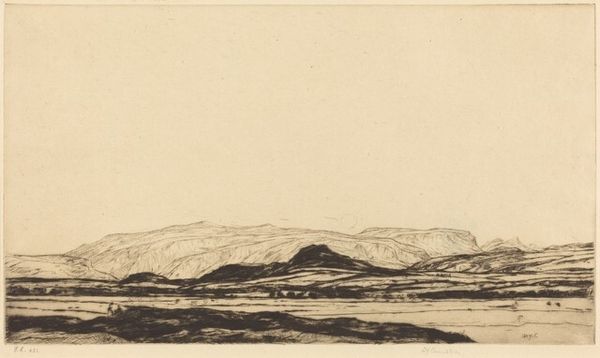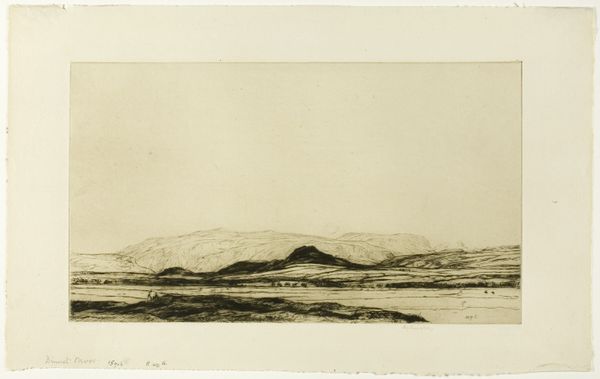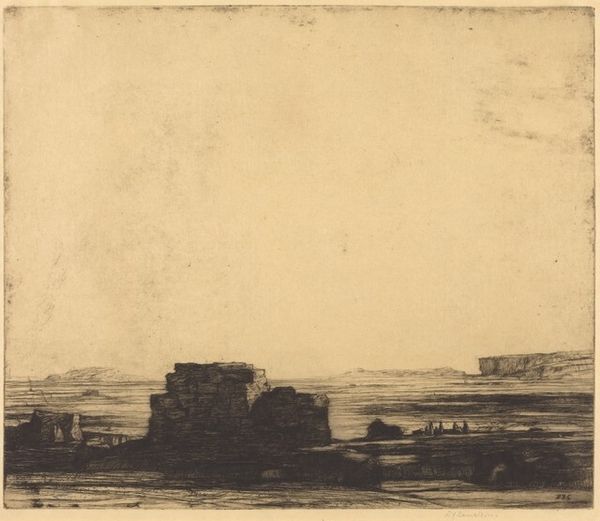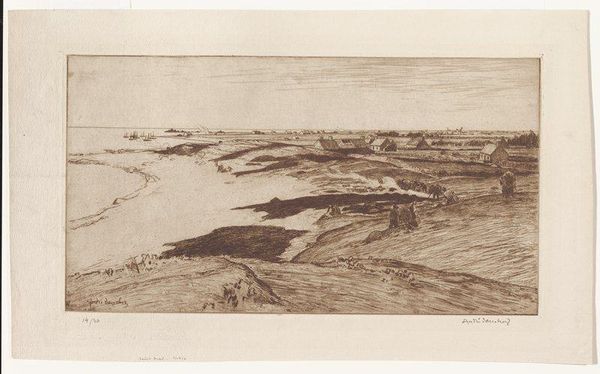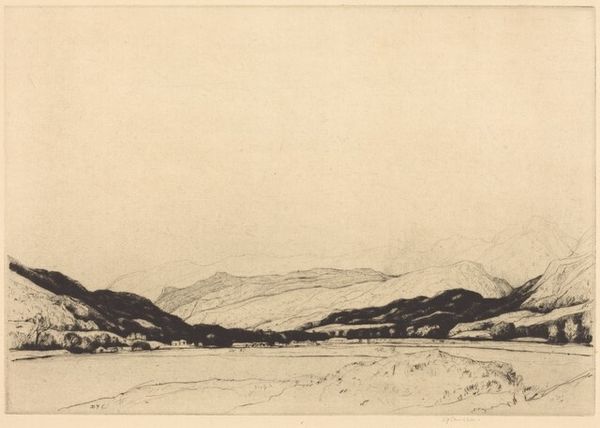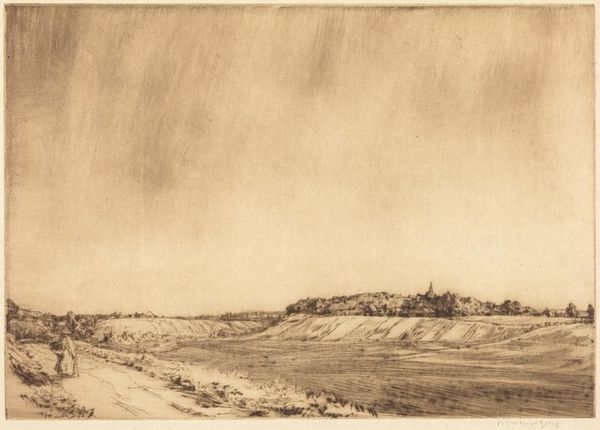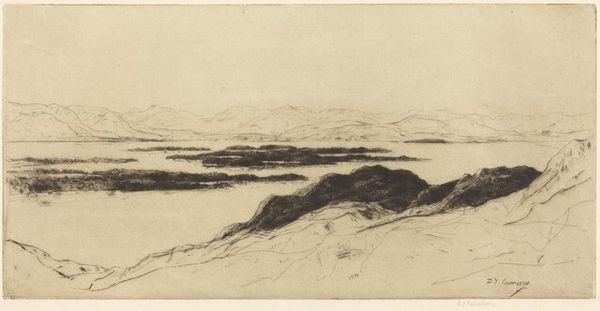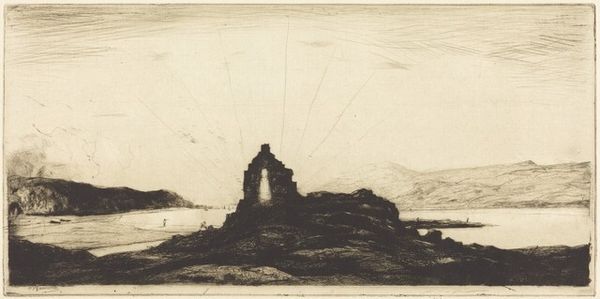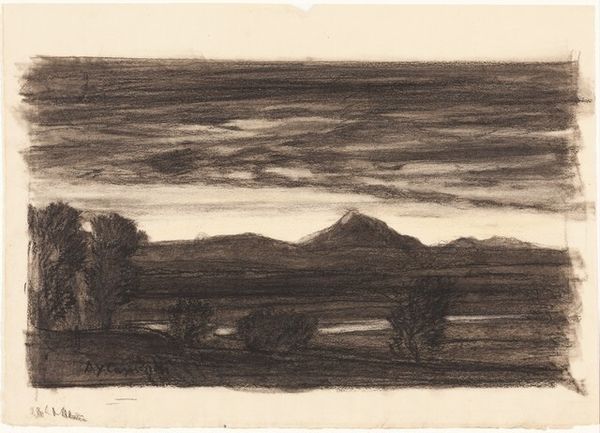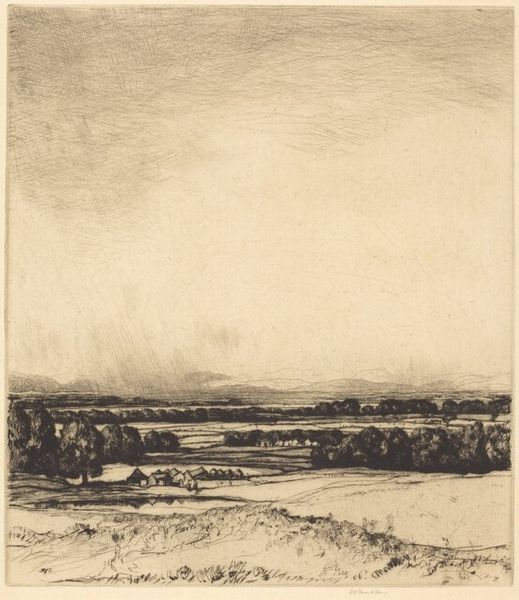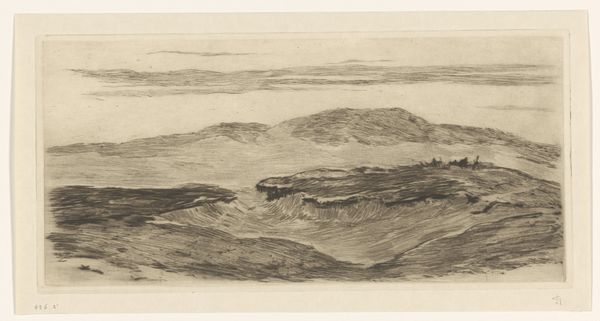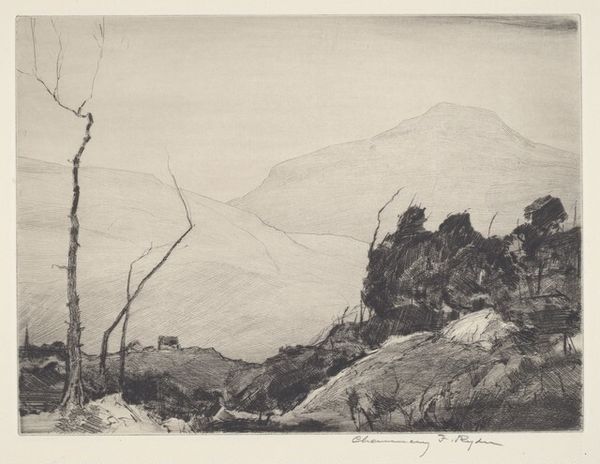
print, etching
#
art-nouveau
# print
#
etching
#
landscape
#
pencil drawing
#
realism
Copyright: National Gallery of Art: CC0 1.0
Curator: Looking at this etching, "Arran Peaks," completed by David Young Cameron in 1912, I’m immediately struck by its somber tone. The sharp, angular mountains loom under a vast, pale sky, and there's a quiet intensity to it all. Editor: I feel that quietness too, almost oppressive. The dark, etched lines dominating the lower half create a powerful sense of mass and permanence, like the mountains have always been, and always will be. Curator: Cameron was deeply engaged in the etching revival happening at the turn of the century, taking influence from Art Nouveau’s aesthetic tendencies. His compositions, especially in landscapes like this, reflect a profound sense of place interwoven with socio-political realities around land use. These aren't simply pretty pictures. They speak to ownership, industry, and our complicated relationship with the natural world. Editor: The lone sun, if that's what it is, is interesting— almost a glyph amidst the heavy forms. Sun disks and celestial images are archetypes for knowledge, illumination. Here though it is small and almost blotted out; is it a visual signal to suggest the erosion of established beliefs and ideologies in the face of modernity? Curator: That’s a fantastic observation! And certainly one that resonates when we consider Cameron’s involvement with the debates concerning access to the highlands and the transformation of rural communities. He’s documenting not just a landscape, but the cultural impact of specific economic choices. Editor: So, Arran itself becomes a symbol... of resilience perhaps? Of enduring Scottish identity amidst change? Curator: Exactly. This image exists not just in the realm of aesthetic beauty, but actively participates in a complex cultural dialogue. It provides a platform to discuss historical and ongoing issues. Editor: It's remarkable how a scene initially so austere can yield such a depth of meaning through its careful selection of symbols. It shows, again, how nature is inevitably inseparable from humankind. Curator: Indeed. Looking at this work again makes you contemplate what parts of ourselves and our environment we leave etched behind us. Editor: Yes, what shadows and markers of existence do we etch on the world’s ever present landscape, as enduring symbols for times to come.
Comments
No comments
Be the first to comment and join the conversation on the ultimate creative platform.
